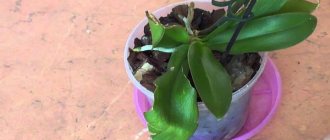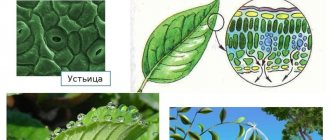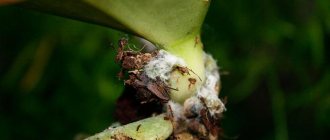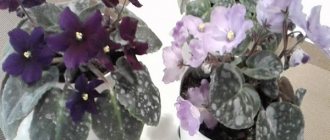Rust disease
Rust is a fungal disease of cultivated and wild plants. Billions of spores create many foci of infection on leaves, shoots, branches, trunks, and needles. The disease is easily recognized by its characteristic stripes, spots or raised orange-yellow pads.
Rust fungi have a complex development cycle. Most species can develop not on one plant, but on several - mushrooms are capable of infecting, manifesting and overwintering on different crops.
Basic description of the disease
Rust is a disease in which living plant tissues, mainly leaves, are affected by fungi of the Heterobasidiomycetes subclass. Rustworms do not feed on dead organic matter, so after sucking the juices from one plant, they move on to the next. Often, rust is first detected on the leaves of crops; if appropriate measures are not taken in time, this disease can destroy the entire plant.
Some species of rust go through their entire life cycle on one plant. They are usually called single-owner. Others parasitize two plants at the same time, which is why they are called multihosts. The latter pose the greatest danger.
This fungus is so tenacious that it does not die when carried by air or insects over long distances.
The number of spores ripening at the same time reaches several tens of billions. For these reasons, the area covered by rust fungi is expanding at an incredible rate, and outbreaks of the disease are breaking out in the most unexpected places.
3 Ascochyta blight
Phytopathology is accompanied by the appearance of small brown spots with a diameter of 1-2 mm on the leaves. As they grow, they darken and a yellow border forms along the edge of the spot. When the disease affects the stem, it breaks at the site of infection. The first signs of the disease appear in the form of drying of the tips of the leaves. A darkened, brown stripe appears at the border with the healthy part.
The fungus is a very resistant pathogen that can withstand frost and drought well. Transferred by droplets of water when sprayed. Control measures are the same as for anthracnose.
Strawberry pests and diseases: description and control methods
Appearance of the affected plant
A wide variety of plants can be affected by rust, from wild plants to agricultural crops, for example:
- cereals,
- industrial crops,
- ornamental plants,
- forest tree and shrub species,
- meadow and field grasses.
A characteristic sign of the disease is clusters of orange or brown spores on the underside of the leaf and yellow oval or round spots on the top. Soon the spots turn into stripes, the leaves turn yellow, then brown or black, dry out and fall off. This happens due to metabolic and water balance disorders, and a decrease in the energy of photosynthetic processes.
If you find various orange-yellow pustules on the leaves, know that after a while they will crack and spores will spill out of them, which are popularly called rusty powder.
So, in advanced cases, the leaves and other parts of the plant (shoots, buds and flowers) infected with rust die. Accordingly, winter hardiness and yield, the quality of fruits, berries or vegetables are significantly reduced. All grain crops affected by rust lose the baking properties of the grain.
Additional recommendations
Beginning gardeners often confuse rust with any red spots on the leaves of plants and begin to spray the flower garden with various fungicides. As a result, many plants die from improperly applied products. Therefore, if you suspect that a plant has been damaged by a fungus, you should either familiarize yourself with high-quality photos of the symptoms and manifestations of the disease, or invite a knowledgeable person to examine the plants and make a diagnosis.
Rust can also manifest itself differently in different flowers and crops. On some flowers it develops faster, on others it grows very slowly, over weeks or months. In any case, the plant needs to be treated; the most important points in this process are ensuring a constant flow of fresh air and removing the affected parts of the flower. It is recommended to re-treat with a disinfectant solution 10-12 days after the first spraying.
Reasons for appearance
Rust disease is dangerous because it can spread through water, wind, and seeds. Having landed on a plant, the fungus destroys it from the inside. Taking away nutrients, it literally makes breathing of stems and leaves impossible.
Flowers at increased risk of rust infection include peonies and lupins, roses and phlox, irises and lilies of the valley, chrysanthemums and other flowers and plants.
The development of the disease is facilitated by the following factors:
- prolonged cool weather accompanied by rain or abundant watering;
- thickened plantings (this interferes with the timely drying and ventilation of plants);
- application of excess amounts of nitrogen-containing fertilizers.
How to diagnose rust?
It is quite easy to determine that rust has “settled” on the leaves. The first and most basic sign that the disease manifests is a red, oval-shaped pad. After several days, the number of pustules increases sharply, filling all the free space on the leaves.
In order for the fight against rust to begin in a timely manner, you need to know the possible locations of the pustules:
- leaf;
- stem;
- box with seeds;
- calyx of inflorescence.
Red spots and stripes are most often attached to the underside of leaf blades; much less often they can be identified on the stem and petiole. If the disease appears on the upper side of the leaf, the pustule may have a light yellow color.
The superficial location of the fungus provokes excessive evaporation of moisture, premature drying and death of the leaf.
Types of disease
Let's look at the manifestation of rust disease using the example of some garden flowers.
- Irises. Their leaves are severely affected by rust, caused by Puccinia iridis. A huge number of brown bubbles cover the surface. The leaves quickly turn yellow and dry out. By autumn, black stripes form on the dead parts, indicating that the fungus has gone into hibernation and not disappeared.
- Clove plants. At the beginning of summer, leaves and stems infected with the pathogen Uromyces caryophyllus become covered with brown pustules. After they have matured and burst, the plant is depressed and the leaves dry out. In autumn, the bubbles take on a dark brown tint - this is a sign that the mushroom has fallen asleep.
- Bulbous plants. Leaves infected with the rust pathogen Uromyces scillarum initially show small, colorless areas that turn yellow over time. Then brownish spores appear on the leaves and even on the scales. The fate of the leaves is the same as that of irises. However, the plant itself slows down in growth and stops blooming luxuriantly.
- Compositae. The spores of this fungus, Coleosporium solidaginis, are located on the lower surface of the leaves. The affected parts soon die. In autumn, the harmful fungus overwinters in flat orange pustules.
- Lilies of the valley. Yellow round or oblong spots appear on the leaves of this flower infected with the Puccinia fungus. On the reverse side, under these spots, whitish pustules of a cylindrical shape and with inwardly curved edges develop over time.
- Cruciferous. All above-ground parts of plants of this family are damaged by white rust, its causative agent is the fungus Albugo candidae. A large number of white spores swell and bend the pads, causing the leaves to curl and die.
Treatment of the disease
If the fungus does settle on the green parts of garden plants, there is no need to hesitate - all rust-affected leaves and shoots must be immediately removed and burned. At the initial stages of the disease, it is also necessary to treat the plantings with fungicides like Oksikhom, Khoma or Topaz. To better fix the drugs on the leaves, it is recommended to add a product called “green soap” to the solution - thanks to it, the protective layer will remain on the plants even after heavy rainfall.
It makes sense to treat trunks and branches of infected trees and shrubs with preparations containing copper or a saturated solution of potassium permanganate, having previously cleaned the affected areas to healthy tissue.
You should not use garden varnish on coniferous trees - the wood underneath will begin to rot, and the impermeability of the composition to air will only aggravate the process.
[4]
If rust is widespread, it is recommended to use fungicides like Fitosporin-M, Baktofit or the like. Treating affected plants with 1% Bordeaux mixture will also be useful. If necessary, spraying should be repeated after 7-14 days.
Fighting methods
Rust on the leaves of garden flowers (roses, hollyhocks, hydrangeas, lilies, lilies of the valley, irises, hyacinths, tulips, carnations, asters, chrysanthemums, gillyflower, gladioli, peonies) is a contagious disease that can and should be combated. There are many folk and chemical ways to destroy rust fungus.
It will be useful to read:
Black spot on garden plants Basic description of the disease Black spot is caused by the fungus Marssonina rosae, which, when it gets on plants…
Folk remedies
- 1 tablespoon of soda, 1 teaspoon of liquid dishwashing detergent, 1 tablespoon of vegetable oil, 1 aspirin tablet, 4.5 liters of water. Mix all components and spray the plants once every 10 days.
Soda
Liquid dish soap
Vegetable oil
Aspirin
- Pour fresh manure (1/3 of a bucket) with water and leave for three days, stirring it from time to time. Filter using a strong cloth, then dilute with water in a ratio of 1:10. Spray plants only in the evening to prevent sunburn on the leaves. For a new treatment, it is necessary to prepare a fresh infusion.
Chemicals (fungicides)
In the fight against rust, 1- and 2% solutions of multifunctional contact and contact-local sulfur- and copper-containing preparations are most successfully used, including:
- Flint Star;
- "Colloidal sulfur" (cumulus);
- "Bordeaux mixture";
- "Oxychom";
- "Falcon";
- "Coronet";
- "Copper oxychloride."
In rainy weather, during treatment with chemicals, you need to add so-called green soap or adhesive to the prepared solution. Its function is to fix the fungicide on the surface of the leaves.
It will be useful to read:
Powdery mildew on roses and other plants The fight against powdery mildew (ashtray), a widespread and dangerous disease for many plants, must...
8 Pests
Houseplants are less likely to be attacked by parasites, but sometimes it happens. Such pests can be:
- Aphid. An insect that sucks sap from plant tissue.
- Cyclamen mite. It sticks to the surface of the leaves, a large accumulation of mites looks like dust.
- Nematode. It is difficult to combat these pests, but they rarely attack indoor flowers.
- Mealybug. This is a small beetle covered with down.
- Shield. It is protected by a wax shield, so the drugs do not affect the insect.
- Grape elephant. A leaf-eating beetle.
- Caterpillars. Rarely affects indoor plants.
Keeping indoor plants requires constant care and maintaining the right climatic conditions. You need to monitor the main factors: humidity and air temperature in the room. A sharp drop or increase in these indicators should not be allowed. It is necessary to change the soil more often and check its acidity. This way you can avoid damage to indoor plants by fungal diseases and pests.
Despite the “inorganic” name, rust is of fungal origin and can be a real disaster for a garden plot. Therefore, any amateur gardener needs to know how to prevent the development of the disease and, if necessary, cure infected plants.
Prevention
The following preventive measures are the best way to combat leaf rust.
- When watering, make sure that water does not get on the leaves.
- As soon as you find infected areas on the plant: leaves or branches, destroy them immediately or bury them deeper into the soil.
- Get rid of intermediate rust hosts, isolate crops or plantings from diseased plants.
- In autumn, it is imperative to remove fallen leaves and fruits, and broken shoots.
- Before starting sowing, deeply plow the soil to destroy harmful spores overwintering in it.
- Clean, sort, treat seeds with fungicides (this is especially useful for preventing rust on sunflower, flax and sugar beets).
- Prepare layerings and cuttings only from healthy bushes.
- Apply potassium-phosphorus fertilizers and feed the plants with microelements.
- Disinfect the garden with fungicides in early spring.
- Once the leaves have blossomed, repeat spraying with special chemicals twice at an interval of two weeks. This way you can prevent rust of fruit bushes (gooseberries and currants) and trees (apple and pear), as well as conifers: pine and spruce.
- Separate varieties that are resistant to different types of rust fungi.
- Plant bushes with a dense crown along the perimeter of the site to eliminate the possibility of spreading infected spores from a neighboring site or from a nearby forest.
- You should not purchase land near pine forests.
- Weed regularly, as they can carry rust.
Rust is a very serious disease. In order not to start it, inspect the plants more often, because a disease detected at an early stage is much easier to cure. Under no circumstances hesitate to take countermeasures – “later” it may be too late. And most importantly, remember about preventive procedures to protect your garden from harmful microorganisms and not use chemicals.
2 Anthracnose
The disease is caused by deuteromycetes of the genera Gloeosporium, Colletotrichum, Kabatiella. The spots on the affected leaves can have different shades: sometimes they are gray-yellow, in other cases brown or purple. As the spots grow, they acquire a brown tint. Spores form on them, which appear in the form of hairs. In these places the leaf surface is rough.
The fungus is frost-resistant and spreads with watering. Develops at high humidity and elevated temperatures.
At the initial stages of the disease, the affected leaves are removed and watering of the plant is reduced in order to reduce humidity. Plants are sprayed with Bordeaux mixture, copper sulfate, and the fungicidal preparation Strobi.
Raspberry diseases: signs and methods of control











